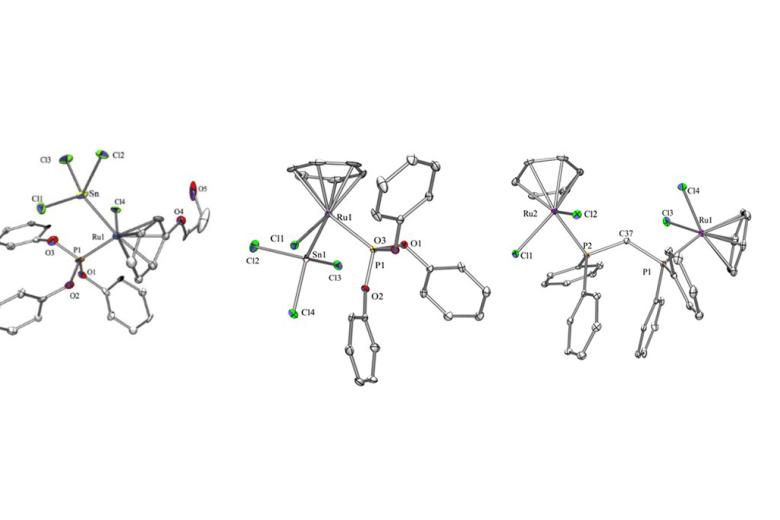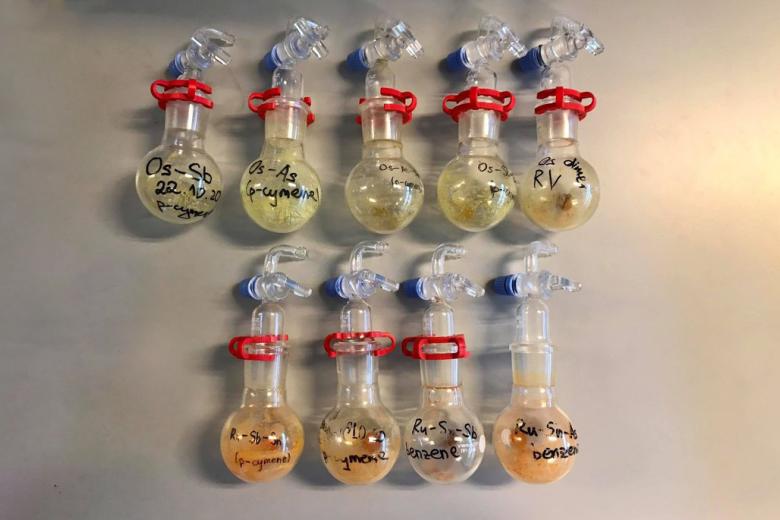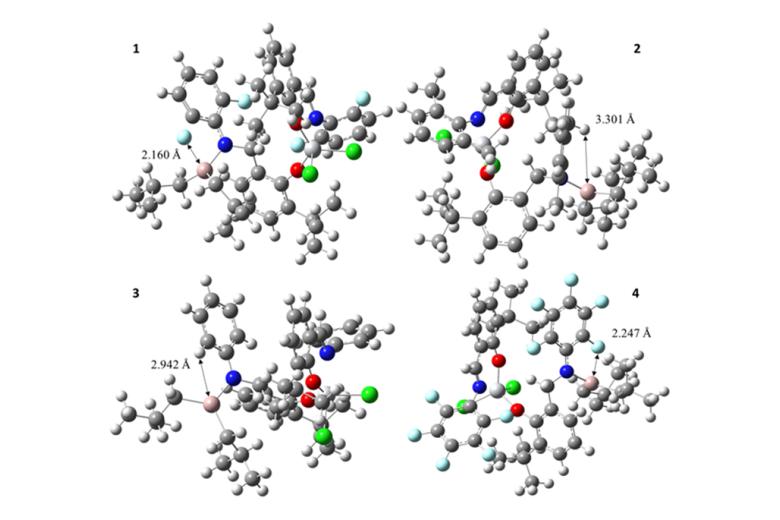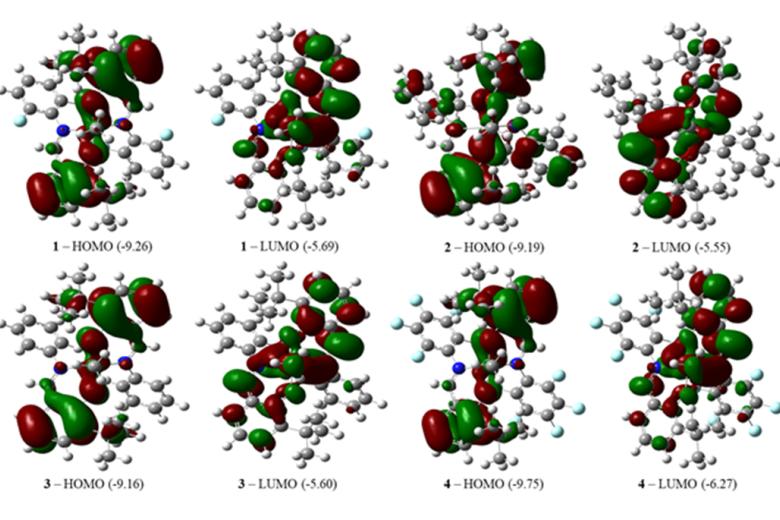Anti-cancer work
Cancer is a deadly disease which plagues humanity. One of the most successful treatment options involve chemotherapy, which is the administration of drugs to reduce tumor growth. Platinum based drugs occupy a vital part of this treatment, but these drugs are accompanied with severe side-effects. Scientists are hence searching other transition metal complexes as potential answers to this ongoing issue.
In 2016 a research area addressing these challenges was established by B. Blom at the MSP in collaboration with the EPFL in Switzerland (Prof. Paul Dyson), the University of Cape Town Medical School (Prof. Sharon Price) and Chemistry Department (Dr. Siyabonga Ngubane), the Technische Universitaet Graz (Dr. Judith Baumgartner/Prof. Christoph Marschner), and AMIBM at Maastricht University (Dr. Dario Romano).
We are currently pursuing, in a rational way, novel metal-based systems for potential anti-cancer applications, and considering agents which are suitable for further detailed biological mechanistic and pre-clinical studies.
Staff
Research topics
Synthesis of neutral and ionic bimetallic complexes bearing two transition metals (Fe and Ru) tethered by a bridging ligand.
Two metal centres seem enhance in vitro cytotoxicity on numerous cell-lines compared to positive controls like cisplatin, showing possible synergic effects.
Publications
-
T. Nabiyeva, C. Marschner, B. Blom
Synthesis, Structure and Anti-Cancer Activity of Osmium Complexes Bearing p-Bound Arene Substituents and Phosphane Co-Ligands: A Review
Eur. J. Med. Chem. 2020, 201, 112483 -
M. Odachowski, C. Marschner, B. Blom
A Review on 1,1-Bis(diphenylphosphino)methane bridged homo- and heterobimetallic complexes for anticancer applications: synthesis, structure, and cytotoxicity
Eur. J. Med. Chem. 2020,204, 112613 -
C. Serbu, C. Marschner, B. Blom
Homo and Heterobimetallic Complexes Bearing m-diphosphane Bridges Involved in Biological Studies: Part 1: Iron, Ruthenium and Osmium, Polyhedron
Submitted, 2020. -
D. BenYosef, D. Romano, P. J. Dyson, B. Blom
Facile Synthesis of Heterobimetallic [FeII(m-diphosphine)RuII] and Homobimetallic [FeII(m-diphosphine)FeII] Complexes and their in vitro Cytotoxic Activity on Cisplatin-resistant Cancer Cells
Inorg. Chim. Acta. 2020, Accepted. -
N. Aldeghi, D. Romano, C. Marschner, S. Biswas, S. Chakraborty, S. Prince, S. Ngubane, B. Blom
Facile entry to germanate and stannate complexes [(η6-arene)RuCl(η2-dppm)]+[ECl3]- (E = Ge, Sn) as potent anti-cancer agents, J. Organomet. Chem. 2020, https://doi.org/10.1016/j.jorganchem.2020.121214 -
B. Herry, L. K. Batchelor, B. Roufosse, D. Romano, J. Baumgartner, M. Borzova, T. Reifenstahl, T. Collins, A. Benamrane, J. Weggelaar, M. C. Correia, P. J. Dyson, B. Blom
Heterobimetallic [Ru(m-dppm)Fe] and Homobimetallic [Ru(m-dppm)Ru] Complexes as Potential Anti-cancer Agents
Submitted, J. Organomet. Chem. 2019. https://doi.org/10.1016/j.jorganchem.2019.120934 -
Berg, Clara; Chari, Suviti; Jurgaityte, Kaste; Laurora, Alice; Naldony, Mateusz; Pope, Frances; Romano, Dario; Medupe, Thato; Prince, Sharon; Ngubane, Siyabonga; Blom, B.
Modulation of the solubility properties of arene ruthenium complexes bearing stannyl ligands as potential anti-cancer agents
J. Organomet. Chem. 2019, 891, 12. -
C. Deacon-Price, D. Romano, T. Riedel, P. Dyson and B. Blom
Synthesis, Characterisation and Cytotoxicity Studies of Ruthenium Arene Complexes Bearing Trichlorogermyl Ligands
Inorg. Chim. Acta. 2019, 484, 513. -
O. Renier, C. Deacon-Price, J. E. B. Peters, K. Nurekeyeva, C. Russon, S. Dyson, S. Ngubane, J. Baumgartner, P. J. Dyson, T. Riedel, H. Chiririwa, B. Blom
Synthesis and In Vitro (Anticancer) Evaluation of η6-Arene Ruthenium Complexes Bearing Stannyl Ligands, Inorganics 2017, 5(3), 44.
Student participation
Synthesis of ruthenium salt complexes with silver anions as potent anti-cancer complexes
The incorporation of Silver (Ag) into the complexes were shown, on breast cancer to significantly enhance activity as well as selectivity in ruthenium salt complexes. A series of these were prepared and also with iron fully characterized spectroscopically. Detailed biological studies revealed also long term stability of the drugs, and prevention of cancer cell migration.
Students: Amal Benamrane and Brian Herry
Bimetallic Iron and Ruthenium complexes brdiged by a diphosphine tether as anti-cancer agents
We have shown that incorporation of iron into neutral bimetallic complexes, bearing iron and ruthenium: [Fe,Ru] tethered by neutral diphosphane ligands enhances activity of the anti cancer agents in vitro. We are currently exploring Structure activity relationships on these agents, exploring the effects of increased chain length, and extending the scope of cell-lines for testing via collaborations.
Students: B. Herry, Tilly Odachowski and Robin Neven
Synthesis of new Ruthenium salt complexes bearing germanate and stannate anions as highly active and selective anti-cancer complexes
Ruthenium salt complexes bearing germanate and stannate anions were prepared and fully characterized, also by X-ray diffraction analysis. these were shown to significantly enhance cytotoxic action on several breast cancer cell-lines (MDA-MB-231 and MCF-7). They were also shown to, in a dose-dependent manner, prevent cell migration and were shown to be stable long-term in vitro.
Student: N. Aldeghi
Preparation of homo and heterobimetallic iron and ruthenium complexes bridged by dppe and dppb
Homo [Fe,Fe] and Heterodinuclear [Fe,Ru] chiral bimetallic molecules bearing dppe and dppb tethers were prepared, characterized, and studied on a cisplatin resistant cell-line and shown to be very active in the case of the Fe,Ru systems, but rather inactive in the case of Fe,Fe systems.
Student: D. BenYosef
Ionic and neutral Iron and Rhodium bimetallic complexes
A series of ruthenium and iron neutral and ionic bimetallic complexes with rhodium were prepared and chracterised fully. It was shown that the systems display interesting solution behavior and at low temperatures in NMR show the existence of two conformers. The exact nature of this chemistry is still under investigation by DFT methods.
Students: M. Odachowski and Alix Fowden-Nevin
Neutral and ionic homo and heterobimetallic Ru/Ir complexes
Similar to the theme above, we prepared several bimetallic iridium complexes bearing a ruthenium phosphane tether and characterized these fully. It was also shown at low temperatures to exist as two distinct conformers, possibly eclipsed and gauche. These complexes will be tested for anti-cancer activity shortly.
Student: C. Serbu
Osmium Arene anti-cancer complexes
A wide array of new osmium half-sandwich complexes have been prepared, also bearing the elements As and Sb (arsenic and antimony), along with tin and germanium; and fully characterized spectroscopically. These will be tested as anti-cancer agents and Structure-Activity relationships pursued.
Students: Tomiris Nabiyeva and Stefan Latis
Phosphane Palladium and platinum bimetallic agents as anti-cancer complexes.
As part of an ongoing theme, systems tethered to Palladium and Platinum are also under exploration in our lab. In particular, attempting to enhance the existing cytotoxic activity of Pt and Pd systems by anchoring via tether to other cytotoxically active metals is under exploration.
Student: Talita. Kuipers
Projects
-
Synthesis of germyl and stannyl ruthenium complexes as anti-cancer agents.
-
Synthesis of ruthenium salt complexes with silver anions as potent anti-cancer complexes
-
Bimetallic Iron and Ruthenium complexes brdiged by a diphosphine tether as anti-cancer agents
-
Synthesis of new Ruthenium salt complexes bearing germanate and stannate anions as highly active and selective anti-cancer complexes
-
Preparation of homo and heterobimetallic iron and ruthenium complexes bridged by dppe and dppb
-
Ionic and neutral Iron and Rhodium bimetallic complexes
-
Neutral and ionic homo and heterobimetallic Ru/Ir complexes
-
Osmium Arene anti-cancer complexes
-
Phosphane Palladium and platinum bimetallic agents as anti-cancer complexes.






